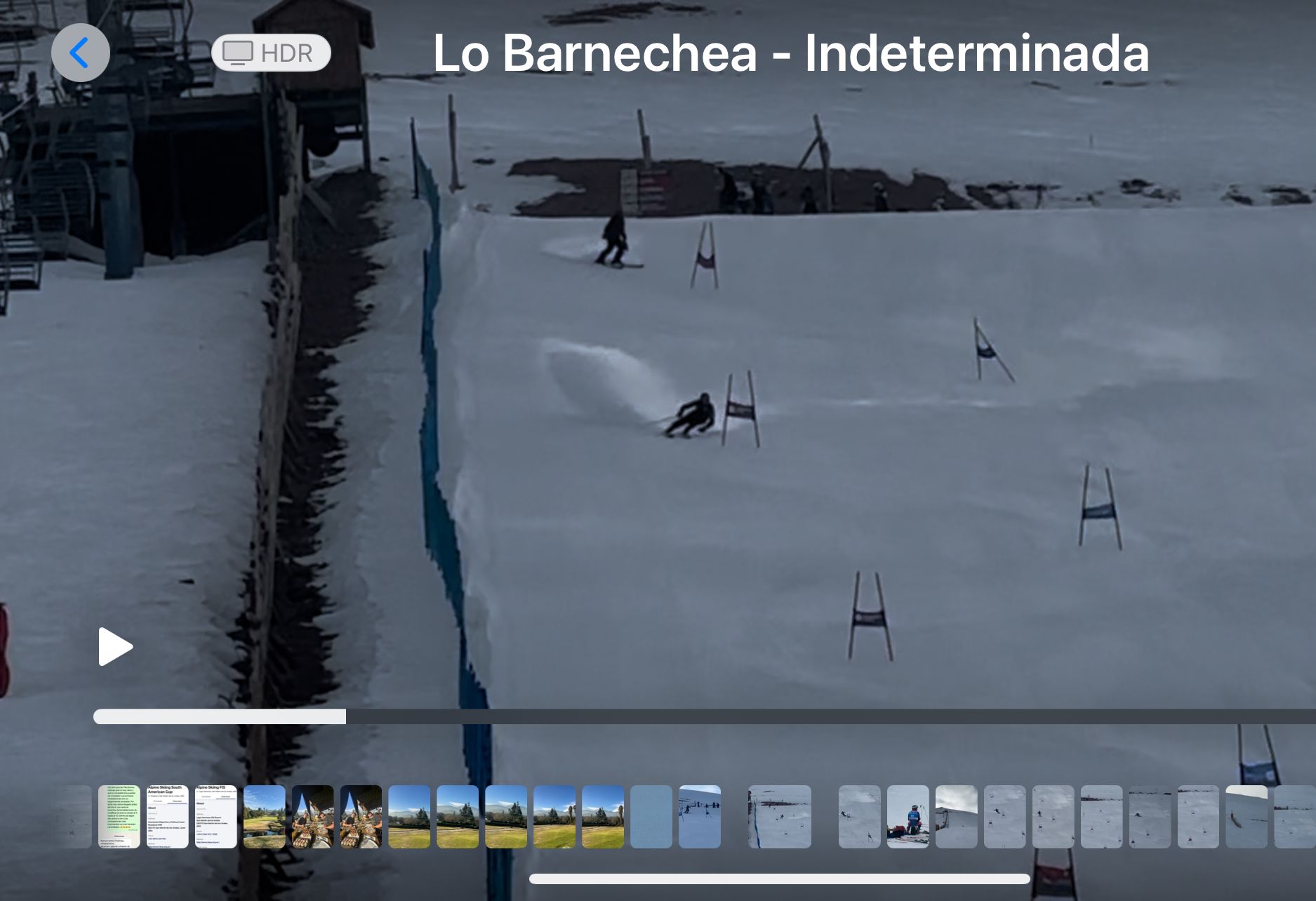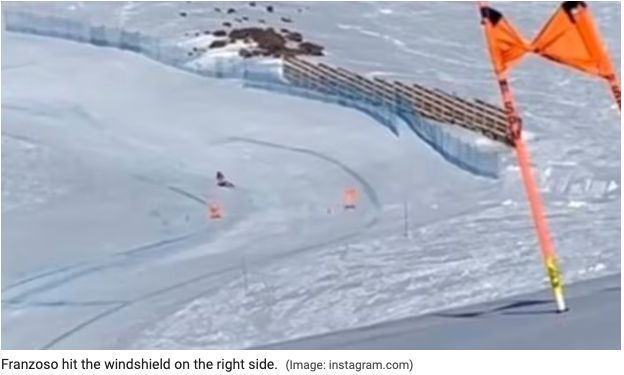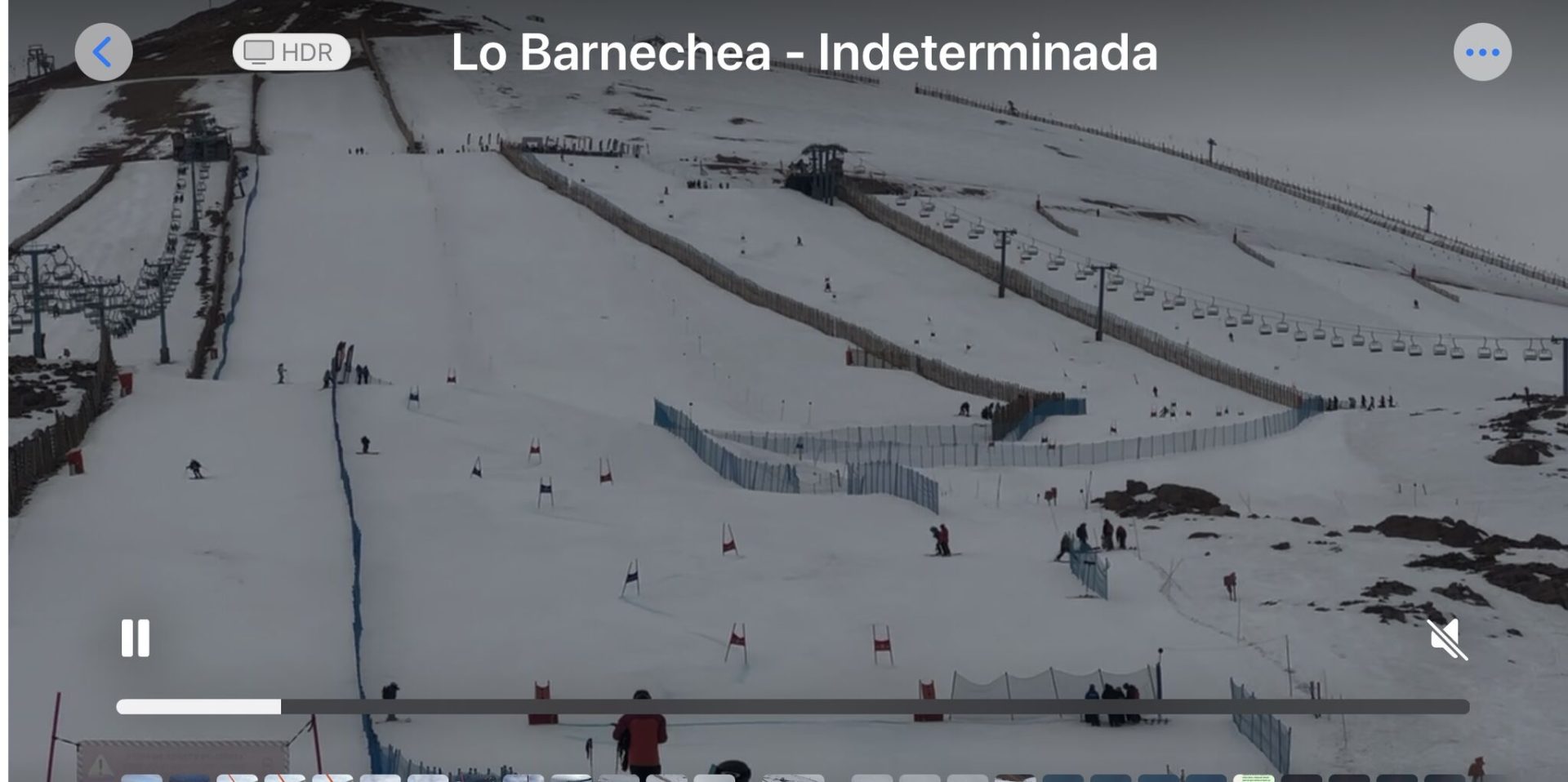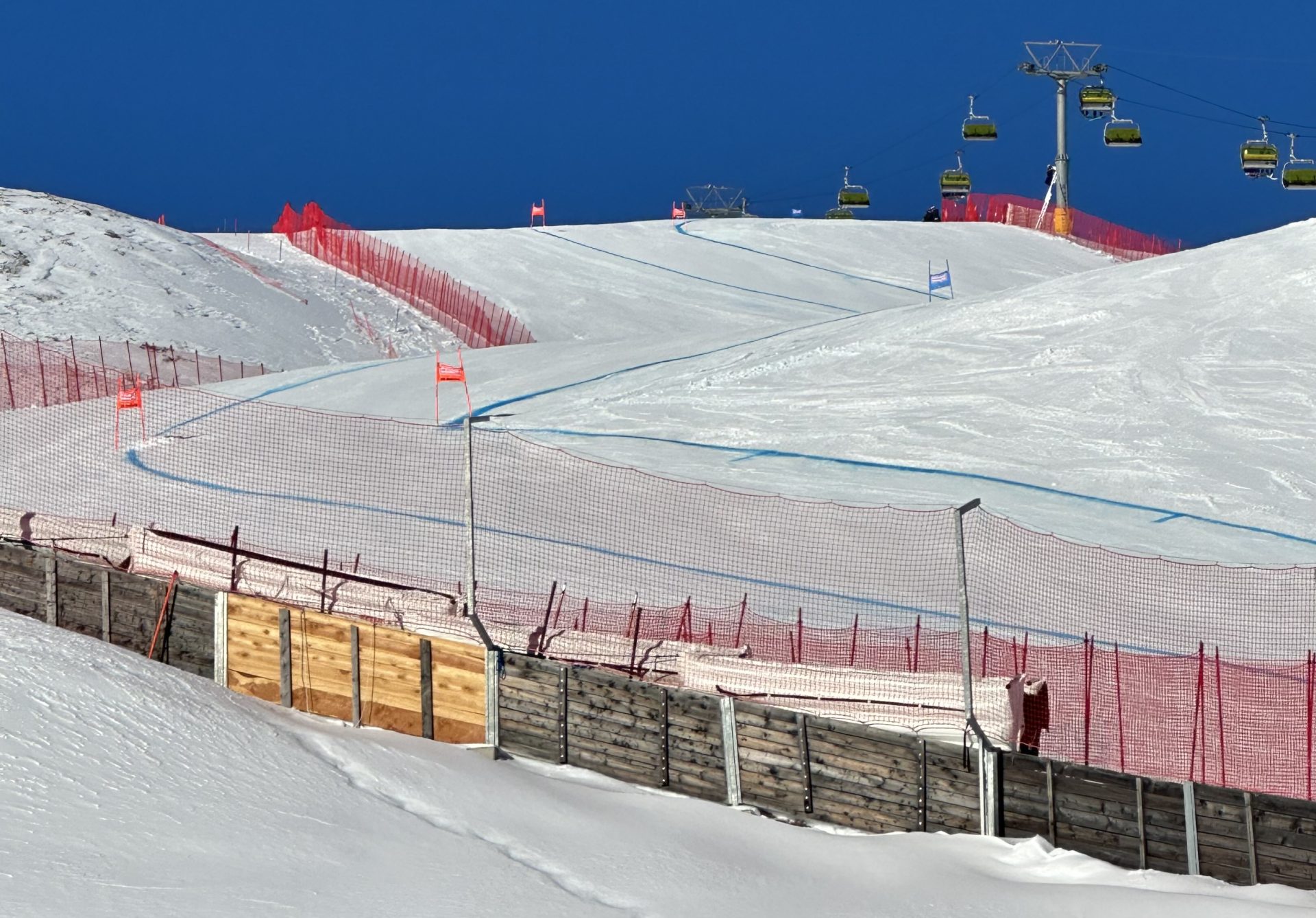 Federiga Bindi shared these images of the slope where the accident occurred. The wooden fence is in some areas as close as 2-3 meters to the b-nets. | Image: Federiga Bindi
Federiga Bindi shared these images of the slope where the accident occurred. The wooden fence is in some areas as close as 2-3 meters to the b-nets. | Image: Federiga Bindi
The death of 25-year-old Matteo Franzoso during training in La Parva, Chile, has plunged the Italian national ski team into mourning and reignited debate over safety standards in elite alpine racing. Franzoso, a member of the Fiamme Gialle group who grew up skiing in Sestriere, lost control on a training run September 15, broke through two layers of B-netting, and struck a wooden fence used as a wind barrier. He succumbed to severe head trauma a day later in a Santiago hospital, just one day before what would have been his 26th birthday.
It is the third fatal training accident in the Italian squad in 12 months, after the death of 19-year-old Matilde Lorenzi, a promising giant slalom skier who lost her life in October 2024 following a fall during training in Schnalstal/Val Senales, Italy. Earlier this year, 18-year-old Marco Degli Uomini, also died after a training crash in the Zoncolan area in the Carnic Alps in Italy.

 Federiga Bindi shared these images of the slope where the accident occurred. The wooden fence is in some areas as close as 2-3 meters to the b-nets. | Image: Federiga Bindi
Federiga Bindi shared these images of the slope where the accident occurred. The wooden fence is in some areas as close as 2-3 meters to the b-nets. | Image: Federiga Bindi
Former Italian slalom specialist Paolo De Chiesa, who competed in three Olympics between 1976 and 1984, and is a regular race commentator on Italian TV station RAI, posted a video criticizing what he described as a “lack of safety parameters” in training. “In the World Cup these things do not happen because the slopes are super protected. But what is the difference between a World Cup race and training?” he asked. De Chiesa, 69, urged the Italian Ski Federation (FISI) to “take three steps back” and reassess its training practices.
De Chiesa had also spoken out after Lorenzi’s death at Val Senales, where the official explanation was that she struck her head on hard ice. He publicly questioned whether that account was complete, suggesting she may have collided with another skier or object, suggesting that “otherwise the glacier would be an open-air cemetery.” Lorenzi’s parents launched a safety campaign in her memory, but de Chiesa rightfully points out that Franzoso’s death shows little has changed and that something is seriously amiss in the Italian Alpine Team.
The chorus of concern has extended beyond former racers. Federiga Bindi, an Italian-American adjunct professor at the University of Colorado in Boulder and certified Alpine ski coach, described Franzoso’s crash as “yet another elite athlete killed in training by impacting with a large wooden fence that should never have been there.” In a strongly worded statement, she called for FIS, the International Ski Federation, to revoke homologation from slopes with dangerous features and demanded greater accountability from both resorts and coaches.

 Federiga Bindi shared these images of the slope where the accident occurred. The wooden fence is in some areas as close as 2-3 meters to the b-nets. | Image: Federiga Bindi
Federiga Bindi shared these images of the slope where the accident occurred. The wooden fence is in some areas as close as 2-3 meters to the b-nets. | Image: Federiga Bindi
Bindi cited her own experience in La Parva, where she had argued with technical delegates to lower the start of a giant slalom race because the course set ran too close to the same wooden fence. “Several coaches were unhappy because ‘with a shorter slope it will be hard to make points,’ as if potential injuries—or deaths like in this case—were not relevant,” she wrote in a long message on her LinkedIn account. Bindi also criticized the poor quality of safety nets, “Those B-nets are a joke, at the very least there should have been an A-Net plus at least two B-Nets,” she pointed out—as is standard in World Cup races in courses next to dangerous structures or features on the slope. She appealed to other athletes to speak up: “If you want to honor Matteo’s death, staying silence is not the way. You only honor him by making sure this time is the last time for real and the only way is to hold those who are responsible accountable.”

 An example of appropriate safety netting at the World up St. Moritz: 4 rows of nets as well as padding. | Image: Julia Schneemann
An example of appropriate safety netting at the World up St. Moritz: 4 rows of nets as well as padding. | Image: Julia Schneemann

 The same corner from the other side: A-net, 2 B-nets, pads and 10-meter catching net. | Image: Julia Schneemann
The same corner from the other side: A-net, 2 B-nets, pads and 10-meter catching net. | Image: Julia Schneemann
The family of late downhill racer Elena Fanchini, who died of cancer in 2023, issued a statement that echoed growing frustration. “Now, proclamations and fine words are no longer enough; now is the time to stop, reflect, bring the entire system together and find solutions,” they wrote. “The time of ‘it was fate’ and ‘we’ve always been lucky’ is over, and continuing to believe this makes us all guilty of what happened in this terrible year. Out of respect for Franz and Mati, it’s time to put SAFETY before every decision.”
Franzoso’s teammates, many of whom were present in La Parva for a September training block, are reeling from the tragedy and many have not trained since the tragic accident. Franzoso had been training alongside Italy’s leading downhillers, including Dominik Paris, Florian Schieder, and Mattia Casse, when the accident occurred. Veteran speed specialist Christof Innerhofer, a World Cup winner and Olympic medalist, has already announced he will no longer train at the Chilean resort and will instead return to Italy. Speaking to Italian sports journalist Gabriele Pezzaglia, Innerhofer said, “I am shocked. All this is unacceptable and the pain is too strong.”
The death of Franzoso—coming on the heels of Lorenzi and de Uomini—has left the Italian Alpine program facing a reckoning. Critics are asking whether training safety has lagged behind the protections in place for World Cup races, where rows of A-nets and B-nets as well as padding around hard obstacles on the side of the race course are standard. They argue that young skiers, racing for points and development in less controlled environments, face unnecessary risk.
For now, FISI has promised support for Franzoso’s family and teammates, but pressure is mounting for systemic reform. Whether the Italian federation, FIS, coaches, and host resorts will act to overhaul safety standards remains to be seen. The crisis could not come at a worse time, with Italy due to host the 2026 Olympics in under five months.

 Federiga Bindi shared these images of the slope where the accident occurred. The wooden fence is in some areas as close as 2-3 meters to the b-nets. | Image: Federiga Bindi
Federiga Bindi shared these images of the slope where the accident occurred. The wooden fence is in some areas as close as 2-3 meters to the b-nets. | Image: Federiga Bindi
